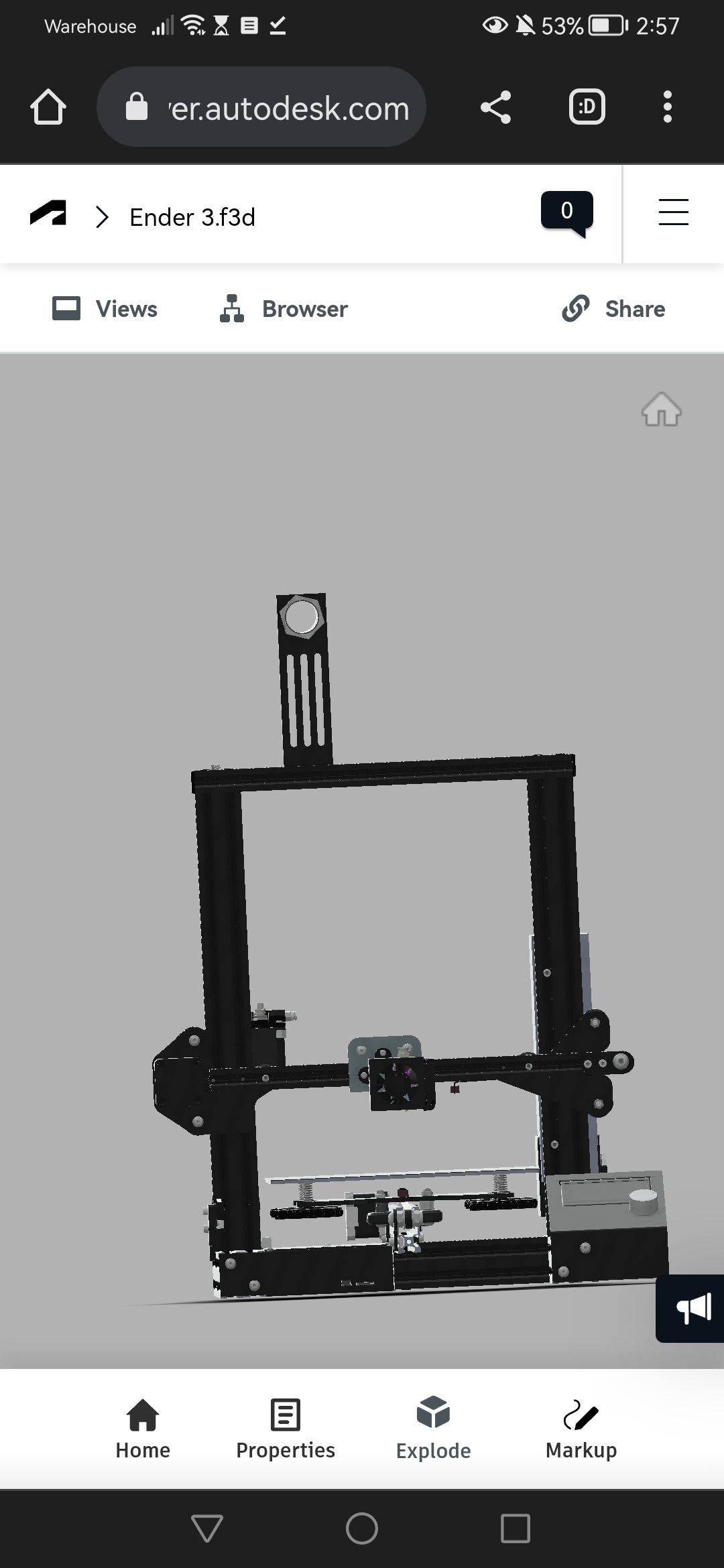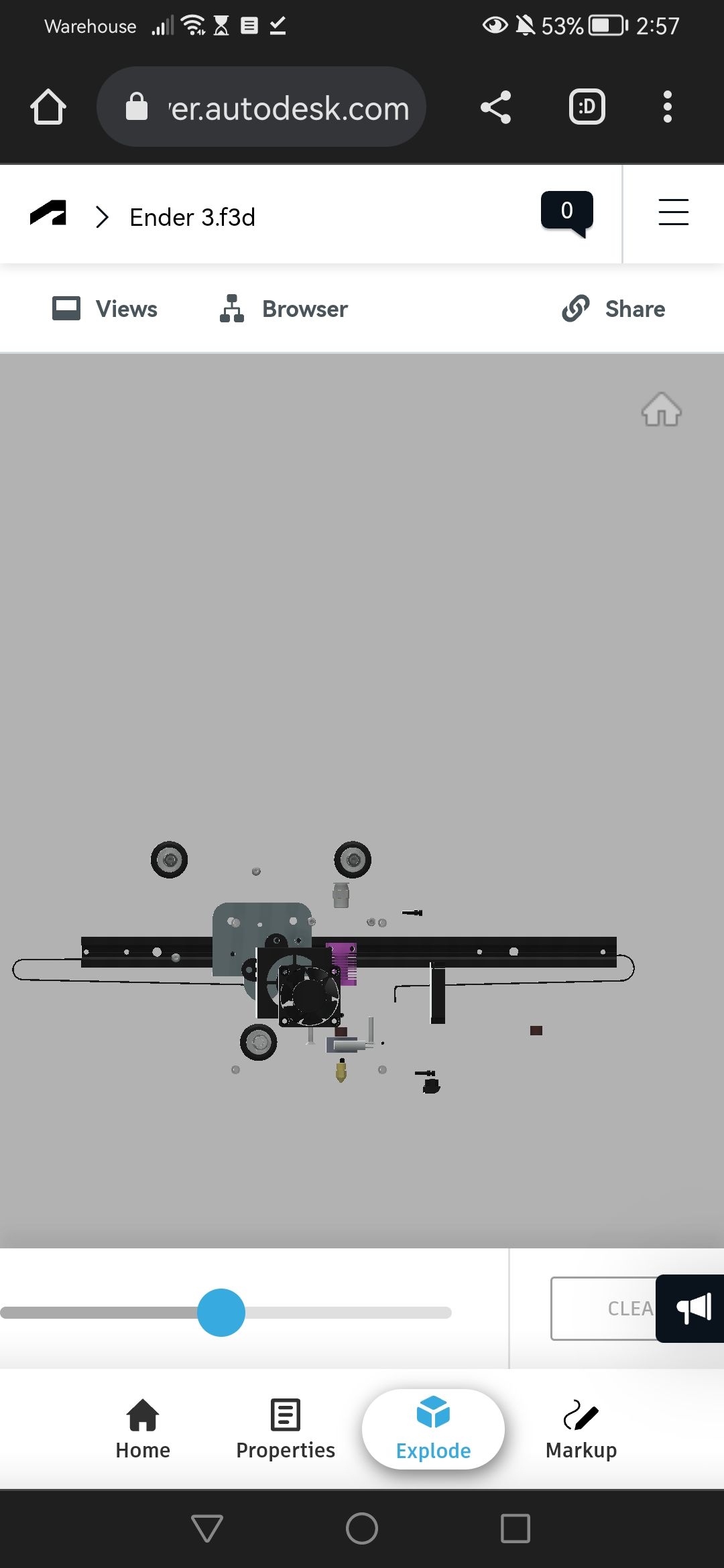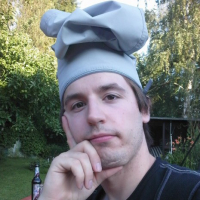Must pulley and idler sizes match?
-
Hello,
I am not a duet user, but I came across this thread while thinking the same thing. Discovered my ender 3, for all belts, have different sized pulleys and idlers to my surprise. I had always thought they were the same size and thus the belts always parallel to the axis. Not only that, the more I thought about it I came to the same conclusion as you here did, so long as the carriage belts are parallel ur fine. But if they are not, then you will have slightly less motion than desired right? Well shucks the ender 3 design did not seem to think of this at all!
And yet, I still got dimensionally accurate prints. So I assume the difference must be negligible. However it is strange that no one has noticed as far as I can tell. Sorry for grave digging
[alt text]([link text](


 ))
)) -
@PassiveAggressor On a Cartesian, the sections of belt connected to the gantry and bed must be parallel to the axis, but other sections don't matter. If you think about it, 1 revolution of the motor, using a 20 tooth pulley will move the belt 40mm so it doesn't much matter where the motor is, as long as the belt is parallel to the axis between the idlers at either end of that axis.
-
Some people like to use the toothed idlers. The problem with them is the bearings are tiny and have limited life, and the shafts have to be very small diameter- i.e. flexible. On the plus side, moving mass is relatively low.
If you eliminate the toothed part of the pulley and simply use the smooth surface of a bearing, you can maximize the bearing size/life.
I read a Gates white paper on GT2 belts (that I have lost track of) stating that when using smooth idler pulleys in contact with belt teeth, at least 9 teeth should contact the pulley. In corexy, the belts bend 90 degrees around the idlers (unless you do something extra with the belt path). That implies that the circumference of the pulleys should be large enough to contact 36 teeth. 36 teeth with 2 mm spacing implies 72 mm circumference. That translates to diameter of 22.9 mm. I used F608 skate wheel bearings for pulleys (22 mm diameter) and they don't create any toothy artifacts in the prints. The large size of the bearings means they will last a long time in the printer, and the large diameter axle (8mm) won't flex.
If you're wrapping the belt 180 degrees around the pulley, the diameter can be smaller- 11.5 mm. 685 bearings are 11 mm in diameter and should work fine. 685's fit a 5mm shaft.
F608 bearings are heavy, as are the 8mm axles, both of which add to the moving mass, so if you're trying to build a superfast printer, you may want to stick with the smaller, lower mass options and be prepared to replace them periodically.
-
@PassiveAggressor your observation is correct and its known that the ender3 belt path is less than ideal. But as you found, at that particular size and setup, the deflection from a non-ideal belt path is negligible enough. Any random ender3 has a higher chance of any of its other design ... decisions to affect print quality and dimensionality.
-
@mrehorstdmd hey Mr Rehorst? Say those idlers you talked about, for 20 teeth the diameter is given as 12 to 12.15, but 20 teeth gives a length of 40mm, 40/3.14 is 12.74, am I wrong about this or are they accounting for something I m unaware of. Also thanks guys for replying I forgot about this until I was googling what the diameter of idlers should be and this came up again aha
-
@PassiveAggressor Toothed idlers can be smaller than plain idlers. That's why I suggested that if you're trying to minimize mass/maximize speed, using the toothed idlers with the tiny bearings is going to be a better option, though you may have to replace them periodically because the bearings may fail, especially if they are the cheapo stuff typically sold to printer hobbyists. Filastruder sells Gates pulleys that probably use better quality bearings than the stuff you get from AliExpress. Gates pulleys seem to be drilled better than the cheap stuff and they only cost about $5 each.
The small, plain idlers sold to printer hobbyists are too small to use in contact with the belt's teeth, except for a 180 degree wrap. If you want to use those in a corexy machine with 90 degree bend in the belt, it's probably best to put a twist in the belt so you can run the smooth back side of the belt on the idler. That will prevent belt tooth induced print artifacts.
The nominal 2mm spacing between the teeth of the belt becomes smaller when the belt wraps around the pulley, so in my example of using 22 mm dia 608 bearings, even though the diameter is a little smaller than the 22.9 diameter calculated to put 9 teeth in contact with the pulley surface, the tooth spacing will be smaller than 2 mm, so you'll actually get 10 teeth in contact with the pulley surface with a 90 degree bend over a 608 bearing.
There's another consideration when it comes to high speed operation- noise. I built a couple servomotor driven corexy sand tables and worked hard to keep speed high and noise low. I found that when you get to about 200mm/sec every pulley (smooth or toothed) the belt teeth touch makes audible zipping noises, and the faster you go, the louder it gets. In a corexy mechanism, that's at least 10 zippers and a lot of noise. I put twists in the belts and run the back sides on smooth pulleys made from 625 bearings and they run quietly, even at high speeds (typically 500-1500 mm/sec). The drive pulleys still make the zipping noises, but that seems unavoidable as long as you use toothed belts.
-
@mrehorstdmd Mark, just for info, when the automotive industry changed from chain driven camshafts to belt driven ones it was found that having the tension too high would cause the belts to "whine" or "scream". It would be reasonable to assume the same would be true with our printers. So slackening the belts might make them quieter (although there are other reasons why one might not want to do that).
-
@mrehorstdmd wait but what's the theory behind the shrinkage? I would have thought it the opposite, that distance would stretch rather than shrink.
Also, what do u say as for using screws to hold bearings or idlers? The actual diameter of an M5 SCREW is not 5mm
-
@PassiveAggressor Let's say you are wrapping the tooth side of a belt around a 22 mm dia 608 bearing. Also assume the belt is 1.7 mm thick (a typical value). The outside diameter of the belt wrapped around the pulley is then 22 + 1.7 + 1.7 = 25.4 mm That means a complete wrap would have 25.4 * pi/ 2= 39.89 teeth touching the pulley. A 90 degree bend/wrap like you'd have for most corexy pulleys, would put 39.89/4= 9.97 teeth in contact with the pulley.
If you want to find the minimum pulley diameter that will have at least 9 teeth in contact with the pulley on a 90 degree bend/wrap, there will be 36 teeth in a full wrap. That's 36 x 2= 72mm circumference measuring the smooth side of the belt. That implies a belt + pulley diameter of 72/pi=22.9 mm. But the belt adds 3.4 mm to the diameter so the pulley diameter will be 22.9-3.4= 19.5mm
When you bend the belt toward the tooth side, the teeth get closer together. If you bend the belt the other way the teeth get farther apart.
The best thing to use to mount bearings is a shoulder bolt. They have accurately ground shaft diameters.
-
@mrehorstdmd thank you for replying. I think I get it but I gotta process it and visualise it. I guess I'm thinking about assuming the thickness of the belt is zero
-
@PassiveAggressor Just grab a piece of belt and try it:
Belt pitch is the spacing between teeth when the belt is straight.
-
@mrehorstdmd ah I see. In the midpoint of the belt there is no stretching. But because the belt has thickness on either side of it, teeth get closer and teeth get further I see now
-
@PassiveAggressor I had one of the links wrong- I fixed it.
-
It must be pointed out that when using "toothed" idlers if you install genuine High Quality Bearings E.G.
From the likes of F.A.G. or S.K.F then they last very well, but expect to pay a premium for quality bearings.
-
<<@deckingman said in Must pulley and idler sizes match?:
just for info, when the automotive industry changed from chain driven camshafts to belt driven ones it was found that having the tension too high would cause the belts to "whine" or "scream". It would be reasonable to assume the same would be true with our printers. So slackening the belts might make them quieter (although there are other reasons why one might not want to do that).Its funny you should mention this as one of my students presented his thesis on toothed belt tension (and the harmonics) using a high speed camera, a Belt Tension Meter RTM-400 and a high accuracy acoustic meter from Schmidt Control Instruments.
Watching the belts deflect at differing tensions and the resonant frequencies they produced was quite interesting
-
@PassiveAggressor If you assume the thickness of the belt is zero you will position pulleys incorrectly. You must include thickness of the belt when you're laying out a belt driven mechanism because the working segments of the belt have to be absolutely parallel to the guide rails (just as you would position lead screws parallel to the guide rails).
See: https://drmrehorst.blogspot.com/2018/08/corexy-mechanism-layout-and-belt.html
-
@mrehorstdmd yes I have read your blog some bit, useful stuff. I only regarded belt as zero thickness in relation to spacing of the teeth on the idler
-
@mrehorstdmd sorry one more question, why do toothed idlers and untoothed idlers have the same outer diameter? Shouldn't toothed idlers be slightly bigger in diameter because they have teeth that mesh the teeth?
-
@PassiveAggressor What you are asking is essentially the same question that is in this thread title and which the OP raised back in January 2019. Idlers come in a range of sizes and are available as toothed or un-toothed. As has been explained numerous times in the 4 years since this thread was started, idler sizes and pulley sizes do not have to match as long as the critical parts of the belt paths are parallel to the relevant axes.
-
Maybe it's time to lock the thread, feel like the subject has been answered full & well for several years IN this thread by now. But it still keeps getting bumped and pop up on the recent feed lol.
-
 undefined wilriker locked this topic
undefined wilriker locked this topic
-
 undefined wilriker locked this topic
undefined wilriker locked this topic